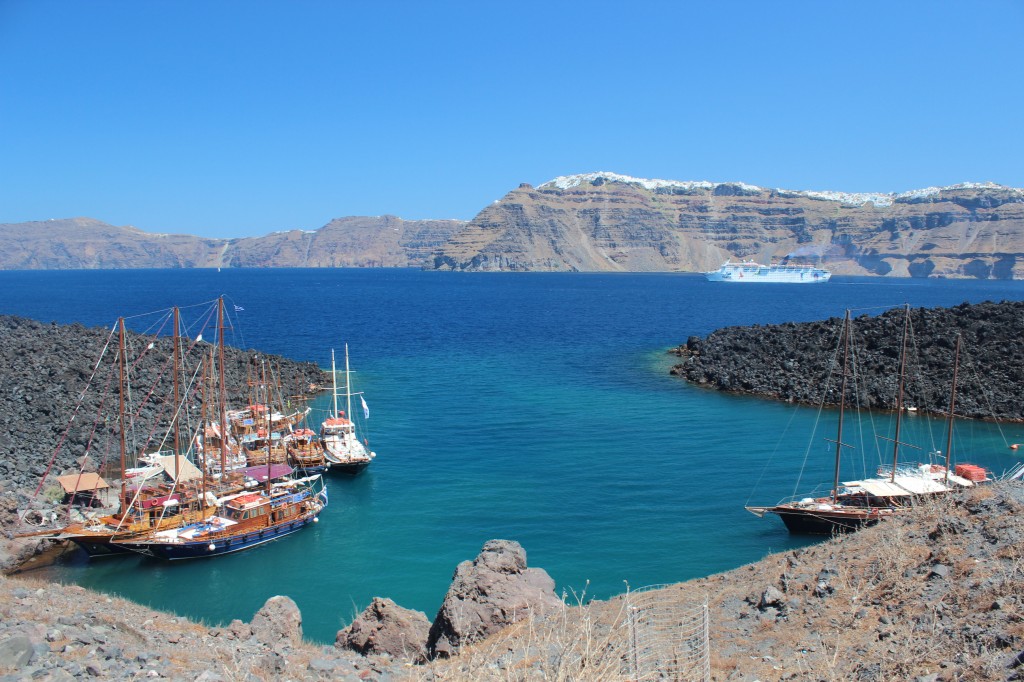Magma is accumulating at an astounding rate beneath the Greek island of Santorini. According to Delft researcher Dr. Andy Hooper, the increase in magma supply is similar to that which led to the Minoan eruption.
Santorini Volcano, the site of the catastrophic Minoan eruption in Greece, exhibits two distinct eruptive styles. Small, effusive eruptions occur relatively frequently and build shields and domes of lava, whereas large explosive eruptions occur rarely, at intervals of ten thousand to thirty thousand years. Both types of eruption were thought to incubate in a shallow magma chamber that is continually charged by small batches of melt injected into the chamber from below.
English and Greek researchers however have revealed that there hasn’t been any steady recharge since the last dome-forming eruption in 1950. Instead the researchers witnessed a very rapid magma accumulation since January 2011. They used satellite data to estimate the volume of magma that has moved up to shallow depths beneath Santorini since January 2011 and came to the conclusion that ten to twenty million cubic meters of magma have been accumulated beneath the volcano. This volume is equivalent to 10-50% of the volume of recorded dome-forming eruptions. The scientists also used GPS instruments to determine the coordinates of monuments in an old triangulation network on the surrounding islands.
Their article ‘Evolution of Santorini Volcano dominated by episodic and rapid fluxes of melt from depth’ was recently published in Nature Geoscience. In an accompanying news & views article (‘A volcano’s sharp intake of breath’) magma flow expert Dr. Andy Hooper (CEG faculty) writes that the finding sheds interesting new insights into the dynamics of shallow magma bodies that fuel large caldera-forming eruptions.
Should the inhabitants of Santorini worry? Yes and no. According to Hooper there is no suggestion that a Minoan-type eruption will occur on the island any time soon. “The volume of magma intruded into the crust over the past 18 months or so is less than a thousandth of the volume that erupted around 1600 BC. However, the rate of magma supply since January 2011, enough to fuel a dome-forming eruption, is strikingly similar to the rate of magma supply leading up to the Minoan eruption.”



Comments are closed.